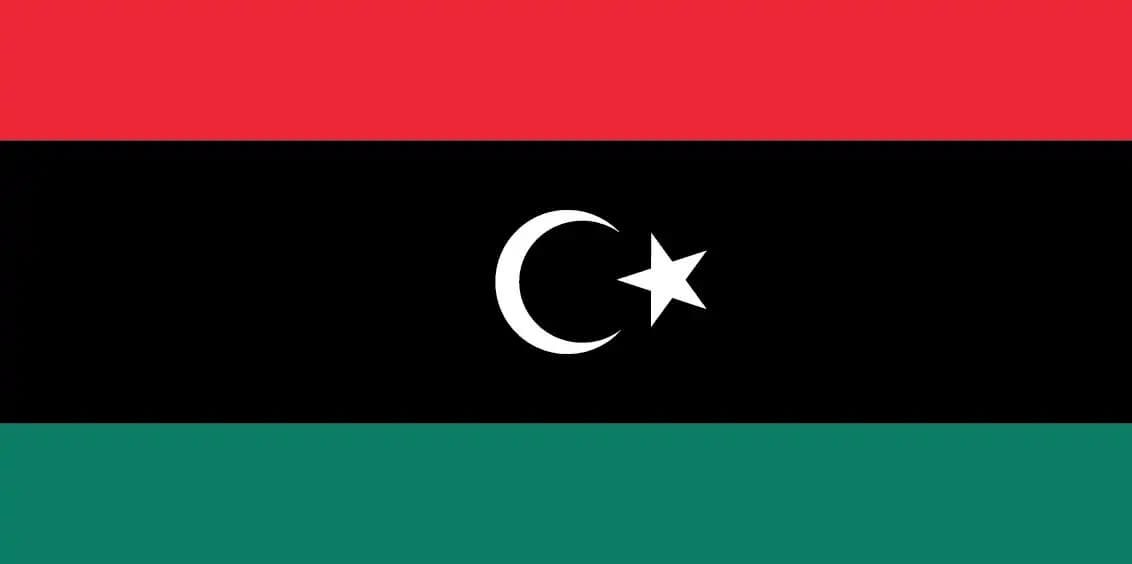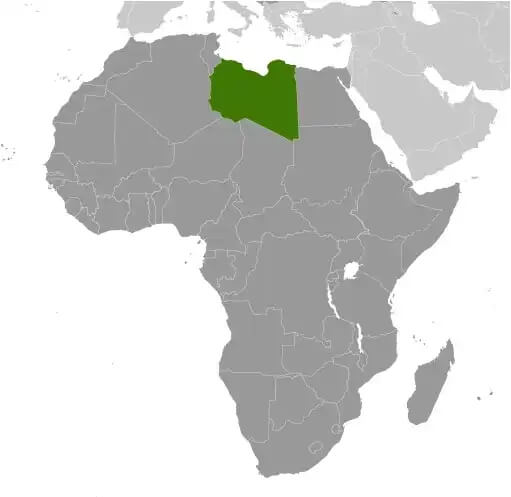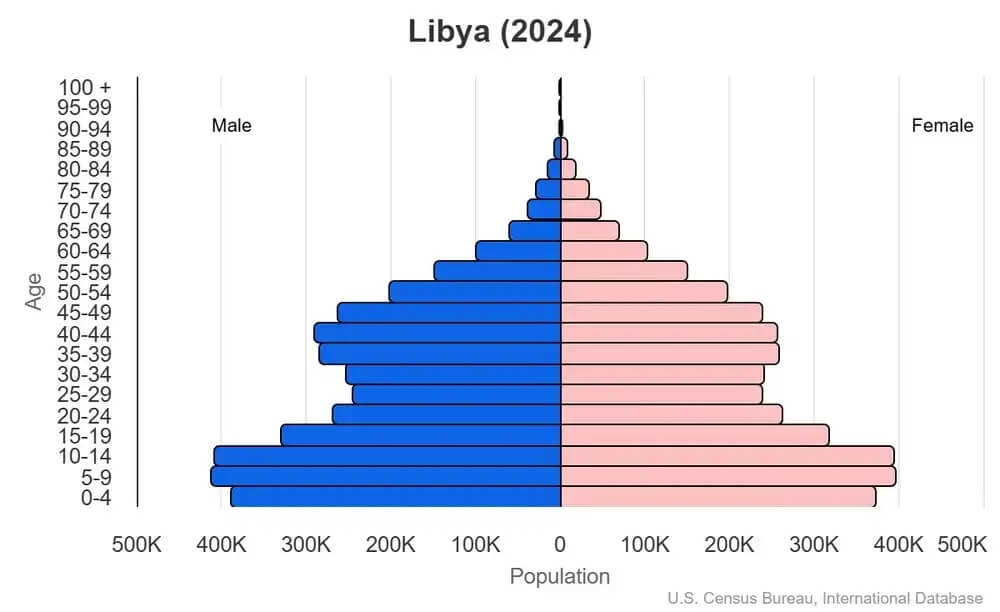World Book
Libya
World Book Index
64


With a score of 64, the country is ranked 90th out of 158 countries in the World Book ranking. (more information)
Introduction
Background
Berbers have inhabited central north Africa since ancient times, but Phoenicians, Greeks, Carthaginians, Persians, Egyptians, Greeks, Romans, and Vandals have all settled and ruled the region. The Italians supplanted the Ottoman Turks in the area around Tripoli in 1911 but relinquished their hold in 1943, when they were defeated in World War II. Libya then came under UN administration and achieved independence in 1951.
Geography
Area
total : 1,759,540 sq km
land: 1,759,540 sq km
water: 0 sq km
Climate
Mediterranean along coast; dry, extreme desert interior
Natural resources
petroleum, natural gas, gypsum
People and Society
Population
total: 7,361,263 (2024 est.)
Ethnic groups
Amazigh and Arab 97%, other 3% (includes Egyptian, Greek, Indian, Italian, Maltese, Pakistani, Tunisian, and Turkish)
Languages
Arabic (official), Italian, English (all widely understood in the major cities); Tamazight (Nafusi, Ghadamis, Suknah, Awjilah, Tamasheq)
Religions
Muslim (official; virtually all Sunni) 96.6%, Christian 2.7%, Buddhist <1%, Hindu <1%, Jewish <1%, folk religion <1%, other <1%, unaffiliated <1% (2020 est.)
Population growth rate
1.44% (2024 est.)
Government
Government type
in transition
Capital
name: Tripoli (Tarabulus)
Executive branch
chief of state: President, Presidential Council, Mohammed al-MANFI (since 5 February 2021)
head of government: GNU Interim Prime Minister Abd-al-Hamid DUBAYBAH (since 5 February 2021)
Diplomatic representation in the US
chief of mission: Ambassador (vacant); Chargé d'Affaires Fadil S M OMAR (since 17 July 2023)
Diplomatic representation from the US
chief of mission: Ambassador (vacant); Chargé d'Affaires Jeremy BERNDT (since 14 October 2023)
Economy
Economic overview
upper middle-income, fossil fuel-based North African economy; 31% economic contraction due to COVID-19 and 2020 oil blockade; reduced government spending; central bank had to devalue currency; public wages are over 60% of expenditures
Real GDP (purchasing power parity)
$90.609 billion (2024 est.)
$91.161 billion (2023 est.)
$82.756 billion (2022 est.)
Real GDP per capita
$12,300 (2024 est.)
$12,500 (2023 est.)
$11,500 (2022 est.)
Exports
$37.753 billion (2023 est.)
$39.831 billion (2022 est.)
$32.38 billion (2021 est.)
Exports - partners
Italy 23%, Germany 15%, Spain 9%, France 7%, China 6% (2023)
Exports - commodities
crude petroleum, natural gas, refined petroleum, gold, scrap iron (2023)
Imports
$33.284 billion (2023 est.)
$27.872 billion (2022 est.)
$25.406 billion (2021 est.)
Imports - partners
China 17%, Turkey 15%, Italy 8%, UAE 8%, Egypt 8% (2023)
Imports - commodities
refined petroleum, broadcasting equipment, tobacco, garments, cars (2023)
Human Development Index
The country's Human Development Index (HDI) is 0.721, ranking it 115th out of 193 countries tested. (more information)
World Happiness Report
The World Happiness Report ranked the country 83rd out of 158 countries tested with a score of 5.607. (more information)



